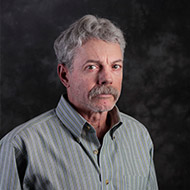Less than 1 percent of fixed-wing training accidents happen in turbine-powered airplanes. Beyond the general safety advantages presumably offered by turbines, several other factors contribute. Much less training takes place in turbines (though maybe not 99 percent less), and almost all of those students have already earned certificates in piston airplanes. There should be a great deal less of this business of working out how to manage airspeed, altitude, and ground track at the same time, although the problems of descent planning and timing a go-around become trickier. The biggest reason, though, is the one noted in the last issue of Flight School Business: Most turbine training, and almost all initial training, is done in simulators, where it’s hard to bend any metal no matter how badly things get out of hand. By the time new turbine pilots actually get into the airplane, most will have had plenty of practice monitoring its performance and managing its systems, not just in normal operations but in every emergency a sadistic sim instructor was able to concoct.
The goal of translating these advantages into piston training has long been frustrated by the lack of suitable equipment. The simulators traditionally available are essentially procedure trainers. They’re useful for learning the sequence of steps needed to fly an instrument approach or configure a complex airplane, but even those that offer visual effects don’t come close to reproducing the control feel of an actual aircraft, much less the tilting and bouncing a pilot would feel attempting a circling approach on a gusty night. The lack of full-motion simulators for light general aviation airplanes has been a matter of simple economics: The cost of building one exceeded what its operator could expect to recoup from student fees during its service life. Acquisition costs alone would have been beyond the means of all but the largest training centers, and to be most useful, each simulator would have to be specific to a particular model of airplane.
This is beginning to change. A new generation of advanced training devices coming onto the market offers, if not the realism of an FAA-accredited full flight simulator, then at least motion in three axes with the option of control resistance that varies in response to changing airspeed. Models designed to emulate specific aircraft/panel combinations start at prices less than $100,000, and add-on packages that represent additional models are priced in the mid-four figure range. For about the cost of one good late-model Skyhawk, a school could simulate each of three different airplanes equipped with either conventional instruments or glass—without fuel costs, 100-hour inspections, or weather cancellations. Priced at, say, half the hourly rate of the airplane, this could prove attractive to students and operators alike.
Accidents should be just as rare in these as in turbine simulators, but would they really help anyone learning to fly? Actually, yes. At least one peer-reviewed study has confirmed that private pilot applicants experienced a positive transfer of learning, resulting in less airplane time, by training first in a simulator. The study was conducted at Embry-Riddle Aeronautical University using Frasca equipment, and the company says the results have been repeated in other studies. Operating experience with the new three-axis units is still too scarce to give any real indication of whether they’re close enough to the real thing to provide a useful head start on learning maneuvers before trying them in the air--or are merely similar enough to be confusing. The Redbird Skyport in Texas is the first flight school looking to study such a question.
And simulator training may have hidden hazards. The ability to crack up, reset, and try again might lead students to unconsciously underweight the urgency of avoiding accidents in real life, and the limitations of these devices’ ability to represent some of the most common risks faced by students and new private pilots—gusting crosswinds on final, for example—might lead to overconfidence and slack technique. Sooner or later, they’ll have to land the actual airplane, and nothing prepares one for that as well as landing the actual airplane. Even the turbine record bears that out: Twenty of the 47 training accidents over the past twenty years (43 percent) occurred during landing attempts. This is actually 10 points higher than the share of piston training accidents that took place during landings. It’s fair to suggest that making fewer landings in the real world doesn’t do much to improve a pilot’s real-world landing ability.
The schools that have begun to offer these machines would do well to track whether the students who use them really need significantly fewer flight hours to qualify for their checkrides, and do so with an equivalent level of proficiency and safety. The data could provide an important sales advantage if the machines really earn their keep.



